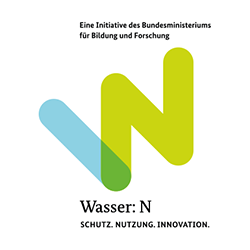Innovative modular system for sustainable remediation of PFAS contaminants from soil and groundwater
Brief description
The substance group of per- and polyfluorinated alkyl substances (PFAS) currently represents one of the greatest challenges for sustainable groundwater management. Experts estimate that there are at least 9,000 point sources (mainly based on firefighting foams) and several thousand hectares of PFAS contamination nationwide. Once PFAS have entered the water cycle, they will remain there ("forever chemicals") and will not gradually degrade microbially in groundwater, as most other pollutants do. Groundwater contamination thus ends up without further treatment merely by natural dilution or by transfer to surface waters.
In this project the behavior of PFAS in the subsurface, possible transformation processes and especially the further development of the remediation methods "funnel & gate", "immobilization", "forced mobilization" and "thermodesorption" are investigated. Thus, a broad field of application with typical characteristics is covered: (1) hydrogeological site characteristics in the unsaturated and saturated zone; (2) point sources due to the use of firefighting foams and area sources (non-point sources) using the example of PFAS contaminated agricultural land; (3) typical, complex pollutant mixtures with PFAS and their transformation products (TP); (4) remediation technologies already in use and adapted to PFAS (funnel & gate) and those for which research is still needed for PFAS application (turnover rates of precursors, forced mobilization).
In the PFClean project, emphasis is placed on in-situ processes and on a holistic approach, whereby the intermediate transformation products, i.e. the long-term consequences of PFAS damage, are identified and quantified, and ways of removing PFAS from the subsurface, their technical implementation and economic boundary conditions are demonstrated.
Objectives
Almost all PFAS groundwater damage cases requiring remediation are currently secured only by pump and treat of the contaminant plume due to a lack of alternatives because of the special PFAS properties (high mobility, persistence, remediation targets with low target concentrations). This regularly raises the question of the proportionality of this technology, which has no active decontamination component. There is an urgent need for compact, economical technologies to support decontamination of the groundwater area or active removal of PFAS from the environment or preventive prevention of their entry into the groundwater.
The aim of the PFClean research project is to develop processes for the decontamination and discharge of PFAS from soil and groundwater.
In this way, the emission of PFAS into the water cycle should be stopped as quickly as possible and the PFAS should be sustainably discharged from the environment. These different approaches fit into a modular system in which we adapt and further develop established remediation technologies to the special challenges of PFAS and to typical site conditions (in the saturated and in the unsaturated zone).


